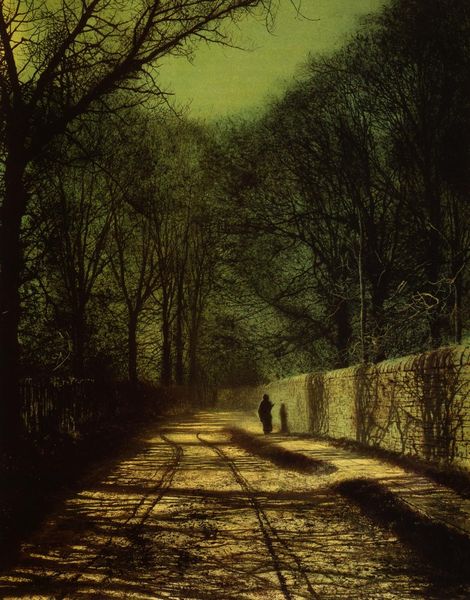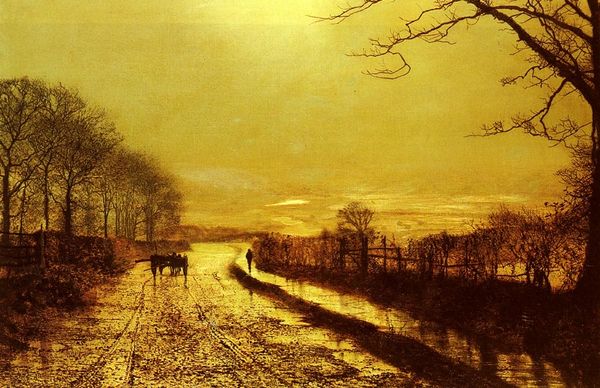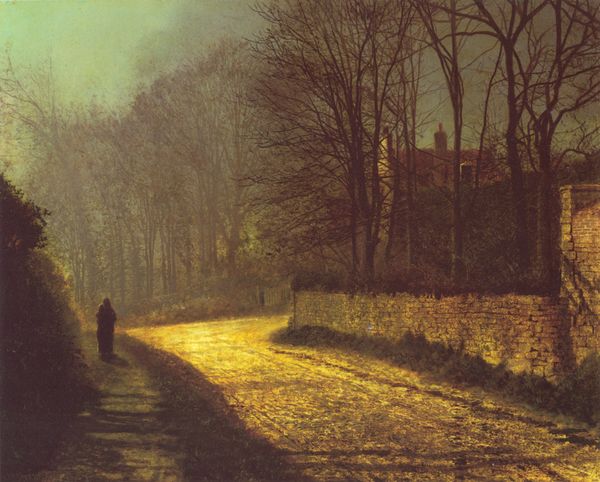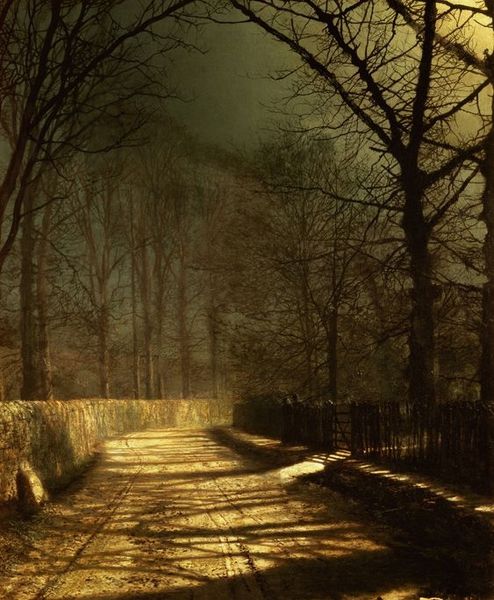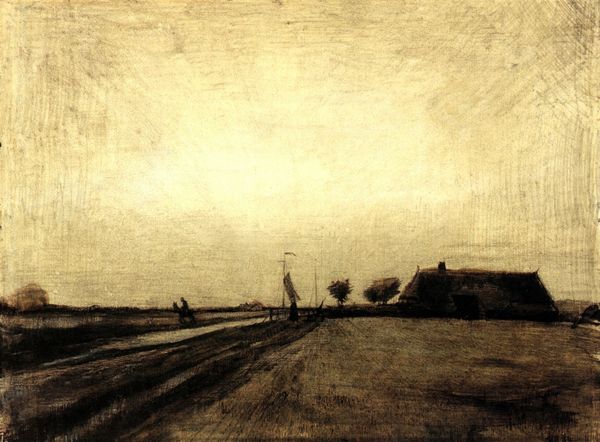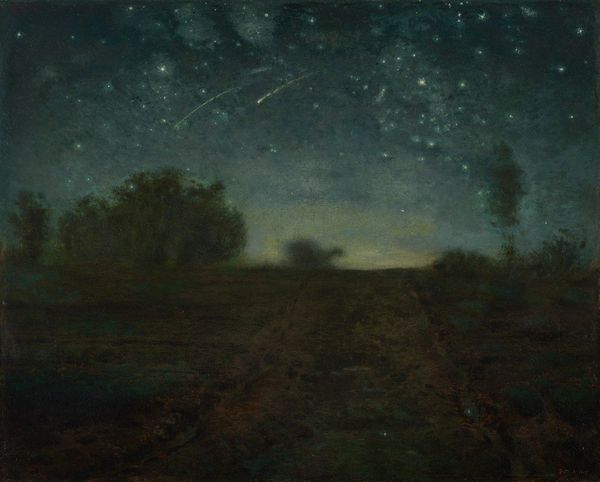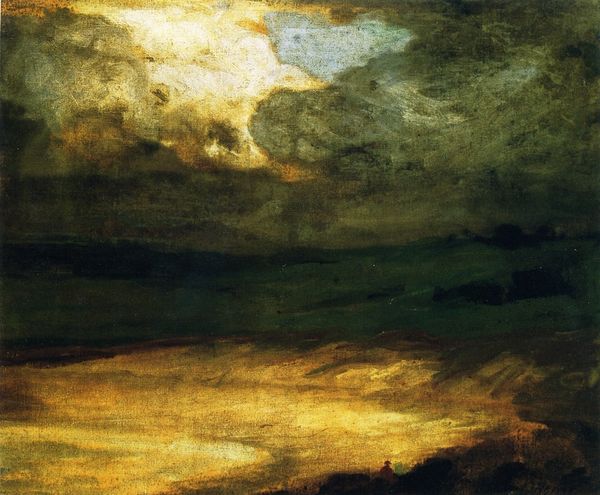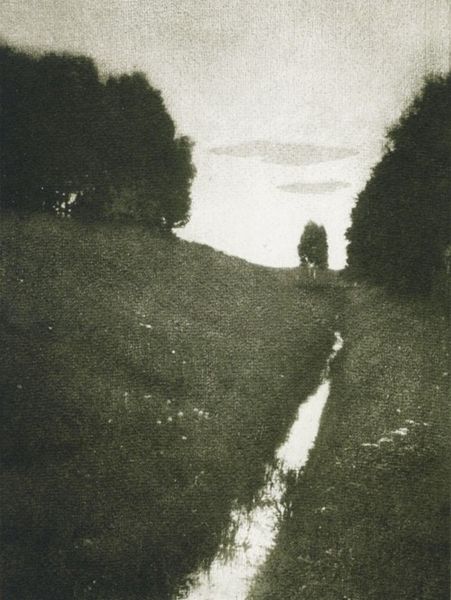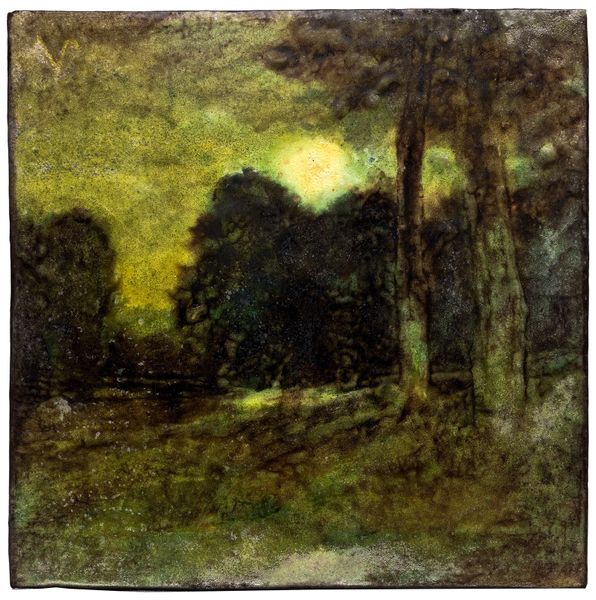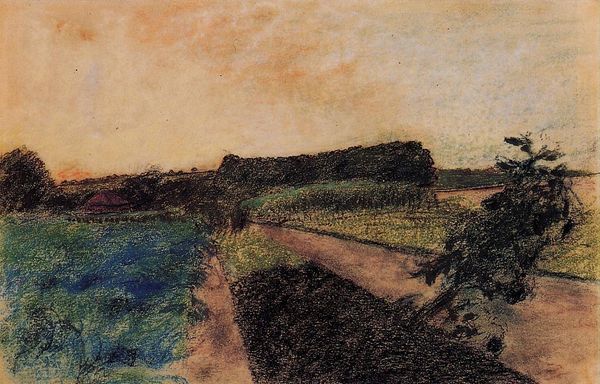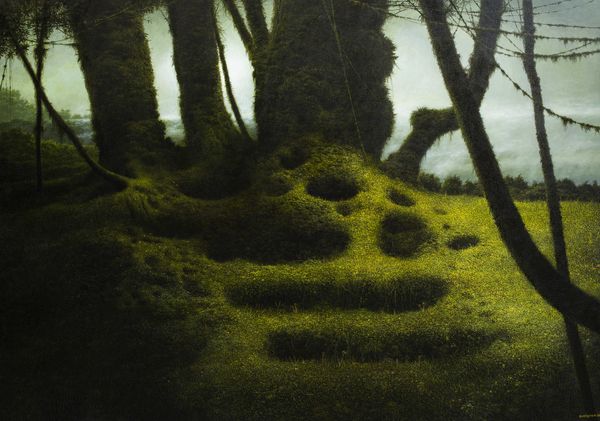
Copyright: Public domain
Curator: Ah, "Under The Harvest Moon" by John Atkinson Grimshaw. He created this nocturne in 1872. It's an oil painting capturing a rural scene bathed in moonlight. Editor: There's something unsettling, yet alluring about the piece. That almost monochrome palette and indistinct skyline definitely create an air of mystery and stillness. Curator: Grimshaw was known for his cityscapes and landscapes, often at night. The Industrial Revolution was in full swing, yet he idealized the countryside. Editor: The scene looks serene, almost romantic, but I can't shake the feeling of societal contrast. How might the artist and his patrons have reconciled industrial progress with this yearning for an idyllic rural past? Curator: Grimshaw appealed to the Victorian sensibilities, didn’t he? The painting romanticizes nature, almost erasing the impact of industrialization that was changing England at the time. Editor: I think it's crucial to consider who had access to these landscapes – both physically and artistically. Was this nature accessible to the working class, or was it a curated vision of the landed gentry? Whose labor created these landscapes, literally and metaphorically? Curator: Those are insightful questions. Grimshaw marketed these idyllic scenes primarily to the middle class, feeding their nostalgia and, perhaps, a certain desire for social separation during a period of intense societal restructuring. His use of light really accentuates the feeling of isolation. Editor: Right, the almost theatrical lighting turns a natural scene into a carefully staged image. That narrow, winding road might represent not only a physical path, but also the precarious journey into modernity itself. What do we lose, and what do we gain? Curator: These paintings allowed urban audiences a safe, controlled experience of the countryside from which they were becoming increasingly disconnected. This fits within broader art market trends of the time. Editor: Perhaps that carefully staged vision speaks to something deeper: a longing for connection, a yearning to bridge divides. Grimshaw offers an entry point to crucial conversations, a place to reckon with historical legacies and imagine more equitable futures. Curator: Indeed, it's much more than just a pretty landscape painting. It’s a cultural artifact, revealing the values and tensions of its time. Editor: Exactly. These aren't just images; they’re mirrors reflecting our histories and potentially inspiring paths to transformation.
Comments
No comments
Be the first to comment and join the conversation on the ultimate creative platform.
